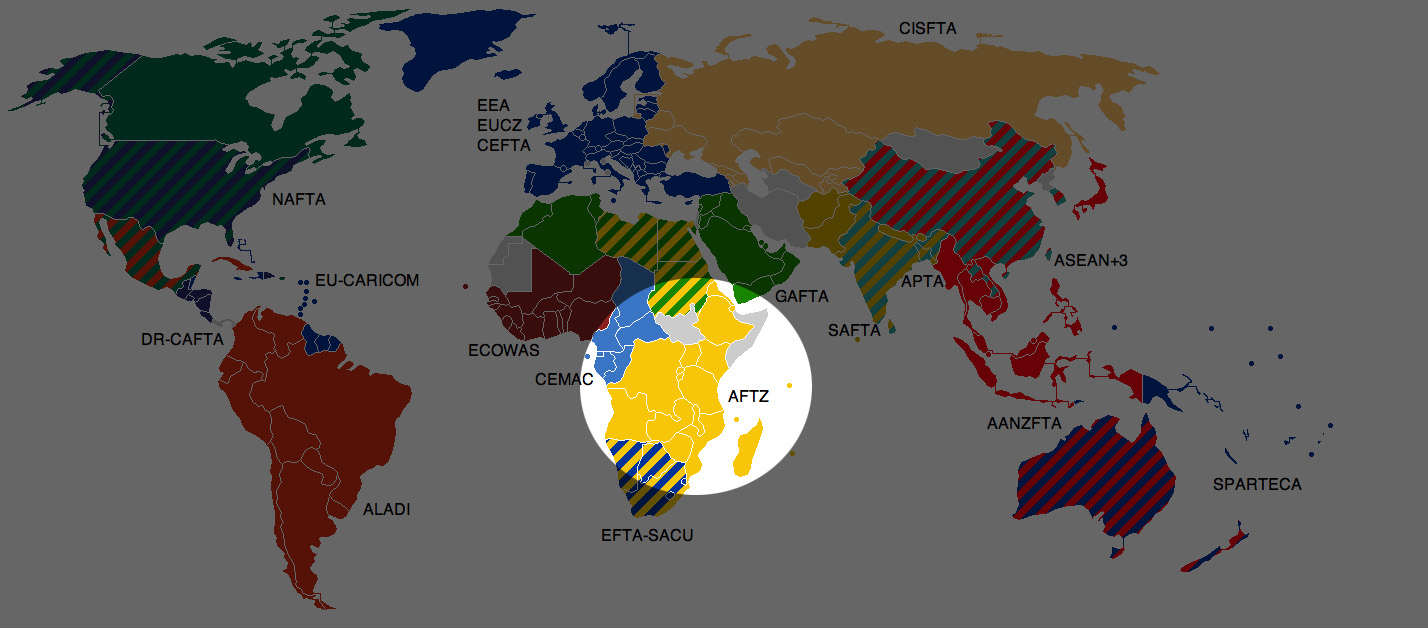Within the African Union of fifty-four sovereign states exists a free trade zone that encompasses nearly half of the countries, one designed to improve individual economies and give support to eradicated tariffs and common currency. Plans for an African Free Trade Zone (AFTZ) began as early as 2008, yet progression toward goals set forth in the agreement have are recently coming to fruition. According to the Christian Science Monitor, this trade zone is expected to affect more than half a billion people and generate a trillion dollars in economic output.

Taking a cue from similar agreements incorporated in the European Union and North America, the primary goal of AFTZ is to create flexible borders within Africa. Because many of the countries involved in this agreement maintain low economies - a recent editorial in Forbes points out that some countries' GDPs are lower than those of some cities in Europe - the abolition of customs fees and a proposed common currency like the Euro stands to benefit everyone involved. While installation of a common franc is not expected for another decade, the twenty-six countries in the AFTZ may still take advantage of improved trade relations.
The AFTZ is presently comprised of nations from the following trade blocs:
COMESA
The Common Market for Eastern and Southern Africa has worked in various incarnations for nearly fifty years to promote political and economic stability among member nations. Of the three blocs comprising AFTZ, COMESA is the largest with nineteen members: Burundi, The Comoros, Congo, Djibouti, Egypt, Eritrea, Ethiopia, Kenya, Libya, Madagascar, Malawi, Mauritius, Rwanda, Seychelles, Sudan, Swaziland, Uganda, Zambia, and Zimbabwe.
EAC
The East African Community has endured a tumultuous history, having been dissolved thirty years ago and revived in 2000. The EAC has since worked to evolve its five members (Burundi, Kenya, Rwanda, Tanzania, and Uganda) into a single state which would allow residents a common passport and currency. More recently, the EAC is preparing to admit South Sudan into membership.
SADC
The Southern African Development Community was formally established more than thirty years ago and has worked to maintain good relations between neighboring nations in the southern region of the continent. While challenges such as livestock disease and civil war have threatened the overall economy of the area, the union has worked to overcome obstacles. Members of SADC include Angola, Botswana, Congo, Lesotho, Malawi, Mauritius, Mozambique, Namibia, the Seychelles, South Africa, Swaziland, Tanzania, Zambia, and Zimbabwe.
Economic critics have praised the formation of the AFTZ as a means of improving individual economies and perhaps forging new relationships outside the zone. Presently, less than ten percent of trade occurs between AFTZ nations. If the trade blocs expect to achieve their trade liberalization goals, these nations must focus more on communication and trade with each other. Given the low GDPs of various member nations, the relief from tariffs is one way to preserve income and invest toward a brighter future.